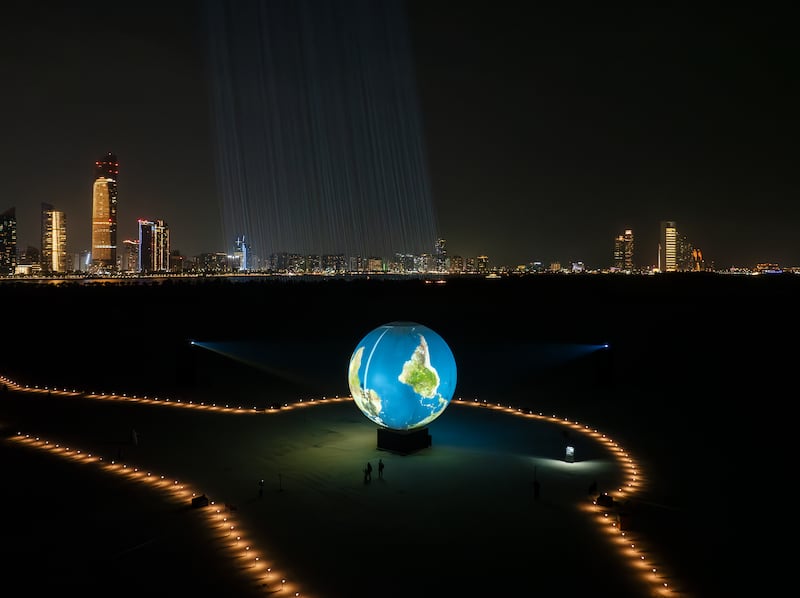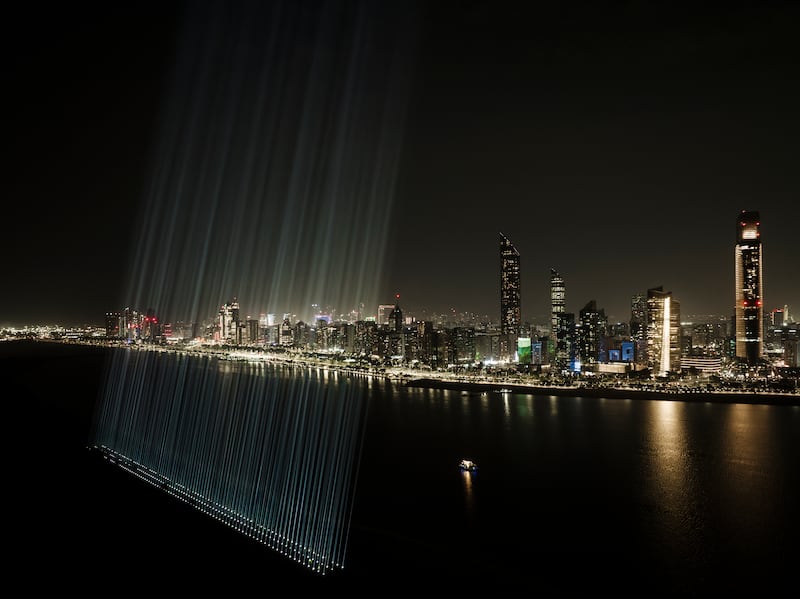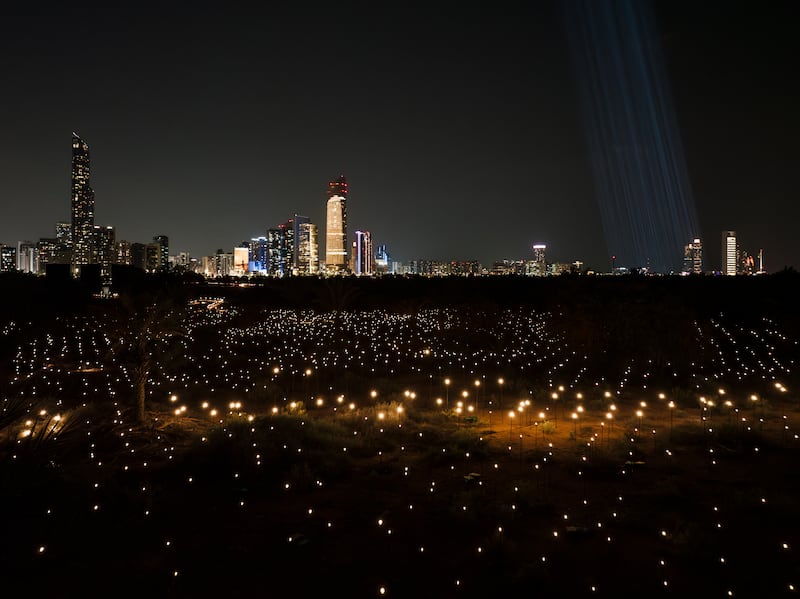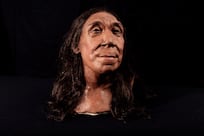Media artist Rafael Lozano-Hemmer is creating poetic experiences using technology.
In an interactive exhibition entitled Translation Island, Lozano-Hemmer has transformed Lulu Island in Abu Dhabi into an interactive playground of light.
His work is part of Manar Abu Dhabi, the outdoor exhibition of light art, where local, regional and international artists have been commissioned to create more than 35 site-specific light sculptures, projections and immersive artworks.
The Mexican-Canadian artist took the theme of the festival, Grounding Light, and created 10 audiovisual artworks, six of which are world-premieres.
“Lulu Island is paradise for contemporary art,” he tells The National.
Remarking on the proximity of the island to downtown Abu Dhabi, the artist says he was amazed that sand dunes, a 300 metre-long freshwater lake, desert flora and 10km of pristine beaches are only 200 metres away from the UAE capital. This contrast, he says, adds to the themes he was exploring in the exhibition.
“The exhibition emerges from the idea of moving through this environment where visitors can find themselves in relation to each other,” he says.
“Culturally and politically, the exhibition is a conceptual 'ode to translation', meaning from one language into another as well as the relocation of the subject in space.”
When commissioned by Abu Dhabi's Department for Culture and Tourism for the festival, Lozano-Hemmer approached the project with the idea of creating work that spoke to the environment through different facets.
“I wanted to scout the island, learn as much as possible about it and plan an exhibition that would be impactful and meaningful while integrating the natural setting,” he says.
“I wanted to connect people with their environment.”
Through his research, Lozano-Hemmer learnt that Lulu Island was the master plan of the Brazilian architect Oscar Niemeyer. In 1981, Niemeyer worked on a proposal for the 424-hectare man-made reclaimed island, located off the coast of Abu Dhabi, which included plans for hotels, residences and an elevated monorail.
This prompted Lozano-Hemmer to think about the man-made within the context of nature.

“Seeing Lulu Island from this new angle I reread Morel's Invention,” he says.
“In the novel by Adolfo Bioy Casares, the protagonist is stranded in a deserted island that is actually inhabited by recorded memories of past visitors. This is an early description of what we know now as augmented reality.”
Lozano-Hemmer took this idea of translating the environment to fit into man’s needs and vice versa, and then again translated it to his light and audio installations on the island.
“There is a definite sense of drama that connects all the artworks,” he says.
“The cohesive theme was the translation of one reality into another. Usually something invisible was materialised so that it could be experienced directly.”
This is seen in the installation entitled Collider, where visitors see the live impact of cosmic rays on the atmosphere as they create a glowing cascade or a large curtain of light. While his project Thermal Drift has a more interactive element where the dissipation of heat is seen on a screen between the bodies of participants, the environment, and even the city.

In the piece Translation Lake, Lozano-Hemmer took the experimental and complex novel Finnegan’s Wake by Irish writer James Joyce, and used artificial intelligence to translate the text into 24 languages spoken in the UAE, including Arabic, Urdu and Hindi. These can be heard while visitors sit on small Abra boats that float through Lulu Island’s central lake. The voice is in synch with illuminated glimmering white lights.
The effect of all these works of light spark curiosity before mesmerising viewers. Aside from being able to interact with the pieces in physical space and real time, the conceptual ideas of each work speak to the theme of Manar Abu Dhabi and also touch on the layers of translation that Lozano-Hemmer is interested in.
“At a very depressing time of global polarisation and climate change, I want to offer creative experiences that are incomplete and out of control,” he says.
“By this I mean that works of art don't exist without participation. The public is an integral part of the artwork, they are not only passive consumers.”
Lozano-Hemmer says that visitors to the exhibition can self-represent in any way they see fit while interacting with the work – through their voice, movements and choices. He hopes these interactions between the viewer, art and environment can create connections between people from different backgrounds and give them more agency and ownership of their cities.
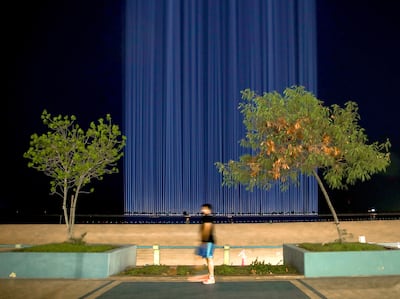
This, Lozano-Hemmer believes, is one of the powers of public art. Work that is free to view and interact with while also shaping the urban landscape, creating unique spaces of shared authentic experiences.
“We are living in a crisis of urban representation. The contemporary, globalised city no longer represents its citizens – it represents capital,” he says.
“New buildings in the Emirates, Mexico or New Zealand are very similar to each other, as developers attempt to optimise costs and find the same homogeneous global solutions.”
Lozano-Hemmer’s work on Lulu Island presents an opportunity for the community to understand and experience how public art isn’t simply a decorative element of the city. It’s a way to shift where and how we spend time outside of our personal spaces and also combat the idea of public spaces encouraging us to constantly consume as opposed to engage or experience.
“Public art presents an interruption of this control and consumption – people spend time creating community around a shared experience,” he says.
“Public art presents an opportunity for people to come together, with each other and their city.”
Translation Island by Rafael Lozano-Hemmer is running on Lulu Island as part of Manar Abu Dhabi until January 31.
